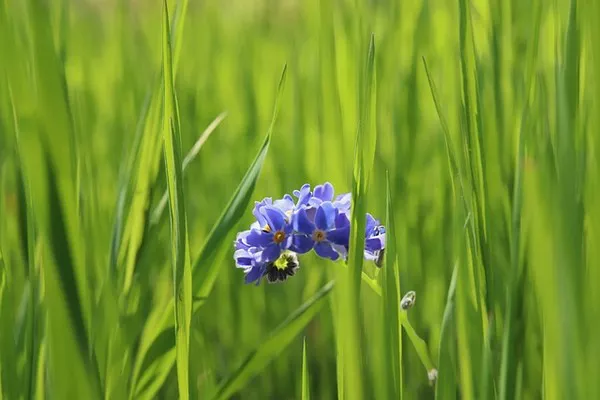Annual plants are a crucial component of gardens, landscapes, and ecosystems worldwide. These plants are known for their vibrant blooms, lush foliage, and rapid growth. But one question that often perplexes gardeners and enthusiasts is, “How long do annual plants last?” Understanding the lifespan of annuals is essential for planning and maintaining your garden. In this article, we will delve into the world of annual plants, exploring their characteristics, lifespans, and factors that influence their longevity.
What are Annual Plants?
Annual plants are a category of flowering or non-flowering plants that complete their life cycle within a single growing season. In botanical terms, “annual” refers to the plant’s lifecycle, which spans from germination, growth, flowering, seed production, and death, all within one year. This distinct feature sets them apart from perennial plants, which can live for multiple years.
Characteristics of Annual Plants
Rapid Growth: Annuals are known for their quick growth. They often sprout from seeds, grow, and produce flowers and seeds within a short period. This attribute makes them an attractive choice for gardeners who seek instant gratification.
Colorful Blooms: Annual plants are popular for their vibrant and showy flowers. They come in a wide array of colors, shapes, and sizes, making them a valuable addition to garden beds, borders, and containers.
Limited Lifespan: As the name suggests, annual plants have a relatively short lifespan, typically completing their entire life cycle within one growing season.
Abundant Seed Production: To ensure the survival of their species, annual plants produce a significant number of seeds. This high reproductive output allows them to disperse their seeds widely, increasing the chances of survival for the next generation.
How Long Do Annual Plants Last?
The lifespan of annual plants is a defining characteristic, but it can vary based on several factors. Generally, annuals complete their life cycle within a year or less, but there are some nuances to consider.
Frost Dates: In regions with distinct seasons, the first frost marks the end of the growing season and can cut short the life of annual plants. To maximize their lifespan, it’s important to know the average last frost date in spring and the first frost date in fall for your area.
Warm-Season vs. Cool-Season Annuals: Annuals can be further categorized into warm-season and cool-season plants. Warm-season annuals, such as marigolds and zinnias, thrive in hot weather and typically die off with the arrival of frost. Cool-season annuals, like pansies and snapdragons, perform best in cooler temperatures and may continue to bloom into early spring.
Self-Seeding Annuals: Some annuals, often referred to as “self-seeding” or “reseeding” annuals, have a unique characteristic. These plants drop seeds that can lie dormant over winter and germinate in the following spring, essentially allowing the same plant to reappear in the garden for multiple growing seasons.
Perennial Annuals: Certain annuals may exhibit characteristics of both annuals and perennials. While they may complete their life cycle within a year, they can sometimes re-emerge in subsequent years if they are able to survive winter conditions.
Factors Influencing Longevity
Several factors can influence the longevity of annual plants:
Climate and Region: The local climate and region play a significant role in determining the lifespan of annuals. Colder regions with shorter growing seasons may limit the lifespan of warm-season annuals, while cool-season annuals might persist longer.
Soil Quality: Soil quality, including factors like nutrients, drainage, and pH, can influence how well annual plants grow and how long they last. Fertile, well-drained soil is essential for healthy annuals.
Watering and Irrigation: Proper watering and irrigation practices are crucial to extending the lifespan of annuals. Over- or under-watering can lead to stress and reduced longevity.
Sunlight: Annual plants often have specific light requirements. Some thrive in full sun, while others prefer partial shade. Providing the right amount of sunlight can help them last longer.
Pest and Disease Management: Effective pest and disease management can prevent premature death of annual plants. Regular monitoring and prompt intervention can extend their lifespan.
Pruning and Deadheading: Pruning and deadheading (removing spent flowers) can promote continued blooming and overall plant health, potentially extending the time annuals remain in full glory.
Fertilization: Proper fertilization can provide annual plants with the nutrients they need for robust growth and longevity. Over-fertilization, however, can lead to excessive foliage growth at the expense of flowering.
Maximizing the Lifespan of Annual Plants
If you want to enjoy the vibrant beauty of annual plants for as long as possible, consider the following tips:
Plant at the Right Time: Ensure that you plant your annuals after the last frost date in spring to provide them with a full growing season. In cooler climates, choose cool-season annuals for early spring planting and warm-season annuals for late spring or early summer.
Choose Reseeding Varieties: Select self-seeding annuals if you wish to see the same plants return in subsequent years. Be mindful of where you plant them, as they may come back in unexpected locations.
Provide Optimal Conditions: Pay attention to the specific needs of your chosen annuals, including sunlight, soil type, and water requirements. Meeting these conditions will help your plants thrive.
Regular Maintenance: Proper maintenance, such as deadheading, pruning, and pest control, will keep your annuals healthy and encourage longer-lasting blooms.
Extend the Growing Season: To get the most out of your annuals, consider extending the growing season by using row covers or cold frames to protect them from early fall frosts.
Conclusion
Understanding the lifespan of annual plants is crucial for any gardener or landscaper. These plants provide stunning blooms and vibrant colors, but their relatively short lifespan necessitates careful planning and maintenance. By taking into account factors such as climate, soil quality, and the specific needs of your chosen annuals, you can maximize the duration of their beauty in your garden. Whether you’re planting warm-season or cool-season annuals, with the right care and attention, you can enjoy the splendor of these short-lived wonders for as long as possible.


